What Is Photomontage - The Definition and History
One of the most important aspects of photography is its physical image. Although in today's digital era it seems like the printing process is valuable to fine art only, photographers have been experimenting with the medium's physicality since the 19th century in many creative ways. One such way is photomontage, revolutionary in its own right as it provided artists with an opportunity to go beyond the medium’s daring quest to represent reality exactly as it is. On its own terms, this technique offered new, or at least re-interpreted worlds on a photographic plate, artworks which combined many photographs in one in order to foster fresh visions and ideas.
Today, we can talk about photo montage art in both printed and digital version, its many technical possibilities within both these realms as well as the ethical issues it faces in contemporary art, but first, let’s try and answer the question: what exactly is photomontage?
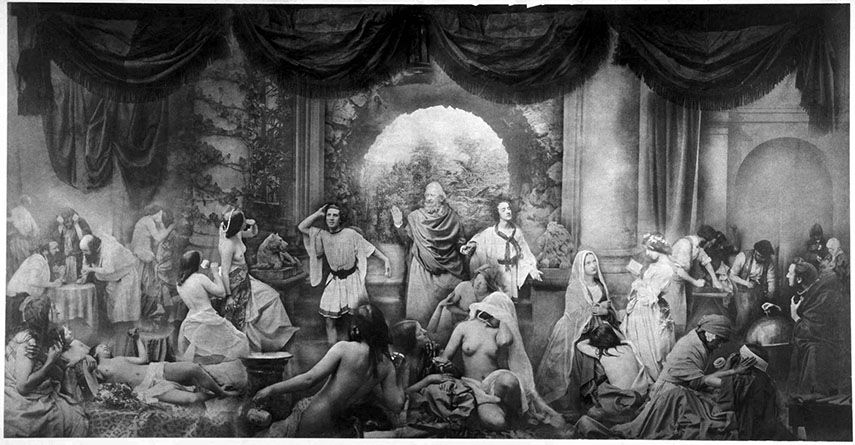
Defining Photomontage : Creative Photography
By definition, photomontage is a combination of several shots joined together for artistic effect or to show more of the subject than can be shown in a single artwork. Images were composed by cutting, gluing, arranging and overlapping two or more photos or reproductions of photos together, sometimes in combination with other non-photographic material such as text or other abstract shapes. The process of creating a collage photo can be traced back to the first darkroom printing attempts when photographers experimented with direct contact printing of objects placed on photographic plates, or techniques such as double exposure and masking. Of course, the art of “mounting the photos together” doesn’t have to involve the creation of new pictures at all - it can employ found and existing prints only as well, depending on the artist’s intentions and goals. Finally, with the advent of computers, the need of having physical imagery disappeared altogether, as today’s examples of photomontage art are being assembled within editing software and often never end up in a printed form.
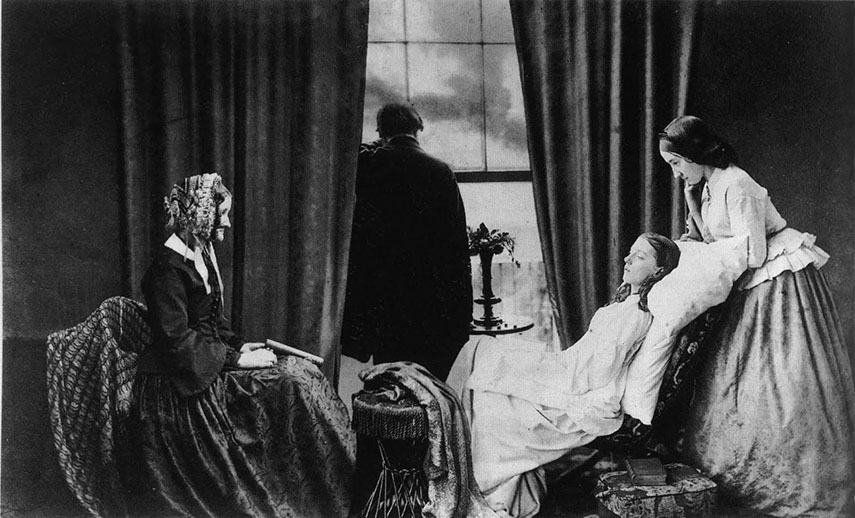
Collage Photo Through History
Perhaps the most famous photomontage came during the mid-Victorian era. Then called “combination printing”, it was created by Oscar Rejlander, a pioneering photographer who was one of the experts in the field. His 1857 collage photo The Two Ways of Life was followed by the 1858 Fading Away by another artist, Henry Peach Robinson. By the end of the century, many other artworks came to life, specifically in forms of funny-looking postcards which often featured the wrong head stuck on a different body, or the creation of strange, impossible creatures. By the beginning of World War I, the method gained its first momentum, with photographers all over Europe producing postcards showing soldiers departing for battle with their loved ones seeing them off. More specifically, it was the Berlin Dada group that developed it as a tool of protest against the war and other political issues of the period, turning it into a proper modern art form.
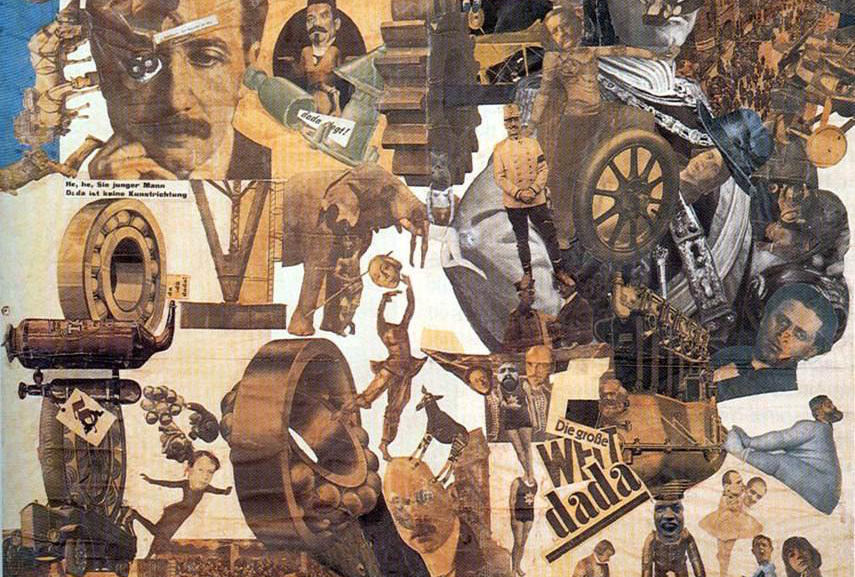
The Photomontage of the Berlin Dadaists
In a collective effort, the Berlin-based Dadaists used actual photographs or photographic reproductions to emphasize the destruction and the horrors of war. Using scissors and glue instead of a traditional paintbrush and calling themselves “monteurs” (mechanics), the Dadaists appropriated mass media imagery and created a sharp, aggressive critique of world events. The vast variety of styles and ways of working helped them depict awakening pictures of reality and drew attention to the eerie consequences of our own doing, while at the same time these attacked the notions and imposed rules of traditional art-making. The seminal artwork from this period is Hannah Höch’s 1919-20 Cut with a Kitchen Knife through the Last Weimar Beer-Belly Cultural Epoch of Germany, which culled pictures of prominent figures like Albert Einstein and German artist Käthe Kollwitz make a fresh statement about modern life and art in the movement. Artworks by John Heartfield, a dedicated anti-Nazi activist, as well as those by Kurt Schwitters, Raoul Hausmann and Johannes Baader, contributed to the creation of a visual language which went on to inspire another important movement of the 20th century.
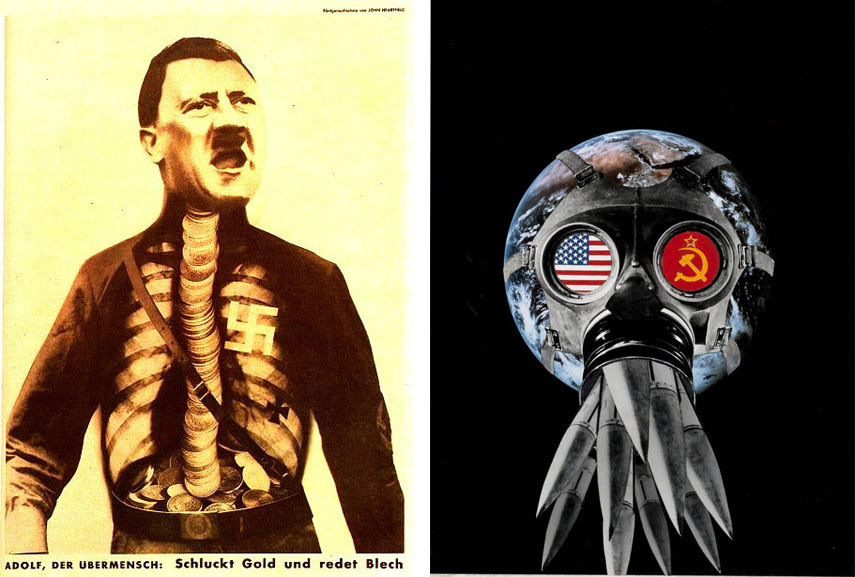
A Worldwide Influence
As a rather established creative tool, photomontage was quickly adopted by the Surrealists, who were attracted to the idea of playing with reality in unusual manner. Among them, we have Salvador Dalí and Man Ray as prominent practitioners of photomontage who enjoyed reflecting the workings of the unconscious mind. Around the same time, the Russian Constructivists like El Lissitzky, Alexander Rodchenko and Gustav Klutsis used collage photo for the means of propaganda artwork, which continued in the decades to follow. In the besieged Republic of Spain, the language of this form of creativity also flourished, as a response to the Civil War, through the works of graphic artist Josep Renau. In Japan, avant-garde painter Harue Koga also produced photomontage-style paintings based on pictures culled from magazines.
Discover available works by Man Ray on our marketplace!
After the Second World War and the beginning of the Cold one, the popularity of photomontage art dropped, as the public got tired of this kind of imagery and turned to the exciting wonders of television. However, its next great revival came with the 1980s and the politics of the anti-nuclear movement in Europe. Much of the montage at this time was designed for banners held during demonstrations, whose aim was to engage in a very graphic and aggressive means of communication - as seen in the works of Peter Kennard, who was unhappy with painting’s lack of immediacy and whose photo montage showed the “unrevealed truth” behind the economic inequality, police brutality and the nuclear arms race. Today, these artworks contain everything from text to sound, thanks to the evolution of digital technologies and software development, especially Adobe Photoshop.
Creative Photoshop - Photo Montage
Photo Montage Techniques
Photomontage techniques have significantly evolved over the past decade with the integration of the computers in the art creation process and the introduction of digital image editing software. The paste-ups are now created digitally through various software such as Adobe Photoshop, Paint Shop Pro, Corel Photo Paint, Pixelmator, Paint.NET or GIMP. These programs have made the process much easier and allowed people to push the boundaries of the digital image. But during the 19th and 20th centuries, the creation of the photomontage was completely physical and it involved a lot of imagination and much more complicated processes and techniques.

Combination Printing
The technique that paved the way was Henry Peach Robinson’s combination printing. It involves the use of negatives of two or more photographic images to produce a single one. This complex method emerged from the desire to transform photography into fine art and produce idealized imagery. Due to the limitations of the negative’s light sensitivity and camera technology, it was first proposed by the French photographer Hippolyte Bayard in order to produce a balanced image with a proper exposition of both the subject matter and the background. Opening another window for creativity, photographers such as Peach Robinson, Oscar Rejlander and William Frederick Lace Price embraced it to produce original photomontages. Since a photo was regarded as the truth, combination printing inspired a lot of controversy in the photographic community of the era as it misrepresented the real world. This way of manipulation completely destroyed ‘the truth’ surrounding the medium and completely changed the way people perceived photo-making.

Other Techniques
As photo-making evolved as a medium, new methods have started to emerge. Creatives such as Romare Bearden used the front-projection. In his mounted projections, he used compositions of paper, paint and photos that he would place on boards that measured 8½ × 11 inches. The images were fixed with a hand-applied emulsion and later photographed and enlarged. When it comes to Dada, their process involved scissors and glue. As their radical assault on art, they would physically cut and paste actual images and combine them into original collages. With the advancement of analog cameras, double or multiple exposure became very popular. Photographers would open the camera shutter several times to expose the film with different images. With every subsequent image being superimposed over the first one, it would give birth to ghostly images of people and objects that were added to the original scene.

Famous Photomontage Artists
The photomontage as an art form has attracted many artists throughout the history of art, from early experimental photographers, Dadaists, Surrealists, and other avant-garde proponents. Seeing it as a radical process that often created controversies, creatives have employed it with various intentions such as to infuse photography with more creativity, critique the society and reflect the social change, question the idea of what art is or simply deconstruct the idea of a photo. Allowing the remarkable creativity, but also being politically charged, this medium was highly diverse in practice. Since many prominent figures have been associated with the method, let's take a look at the most significant creative names who championed it.
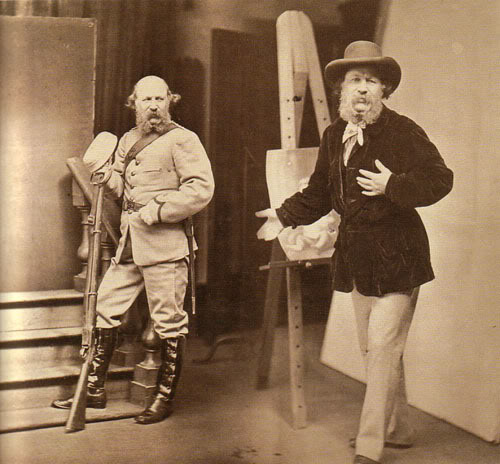
Oscar Rejlander
A pioneering art photographer and an expert in photomontage, Oscar Rejlander is considered the father of art photography. After learning the wet-collodion and waxed-paper processes, he started working in portraiture, but also created significant erotic artworks with circus models, street children, and child prostitutes. After experimenting widely with combination printing, he made his infamous print The Two Ways of Life consisted of thirty-two pictures. Showing two boys being offered guidance by the patriarch, the print initially caused quite a controversy for its partial nudity. Still, the print ended up being a success and he was soon after admitted to the Royal Photographic Society of London. He continued to experiment with double exposure, photographic manipulation, and retouching throughout his career. Rejlander's ideas and methods were adopted by other photographers of the era.

Henry Peach Robinson
Henry Peach Robinson is best known for pioneering the process of combination printing as an early example of photomontage. His pictorialist photos and writings made him one of the most influential photographers of the second half of the 19th century. After working in commercial portraiture, he started making photographs that imitated themes and compositions of the anecdotal genre paintings. His earliest-known pieces created through combination printing was Juliet with the Poison Bottle, but his most famous composite photo is Fading Away showing a girl on deathbed surrounded by her family. It belongs to his Pre-Raphaelite phase where he attempted to capture moments of timeless significance in a ‘medieval’ setting. He perceived the creation of combination photos as demanding as the painting for the artist.

Hannah Höch
One of the rare females associated with Dada, Hannah Höch continuously promoted the idea of women working creatively in society. In her photomontages, she used other people’s visual elements to transform them and integrate them into her larger pieces where these initially unrelated imageries would form insightful narratives. This is a strategy that many Dadaists and Surrealists have adopted. As she actively critiqued the society, her pioneering photomontage works often reflected gender issues and the woman’s role in a modern society. She actively promoted the idea of the ‘New Woman’ in the era. Apart from photomontages, she often incorporated readymades, always questioning the notion and idea of art itself. She is also famous for the Dada Dolls that were quite different from any other pieces associated with this movement.

John Heartfield
A pioneer of using art as a political weapon, John Heartfield often incorporated anti-nazi and anti-fascist statements. After being introduced to Dada, he started creating art in mixed media with the cacophony of visual elements that conveyed a clear message to his audience. He has developed a unique method where he appropriated and reused pictures to create pieces with a powerful political effect. Reflecting chaos and uncertainty that Germany has experienced during the 1920s and 30s, his pieces transformed this form of art into a powerful form of mass communication. He would choose shots of politicians from the press and disassemble and rearrange them to compose a radically changed meaning. His most famous piece War and Corpses: The Last Hope of the Rich from 1932 reflected Germany’s dangerous impulse toward war.

Kurt Schwitters
Having been working within several genres such as Constructivism, Bauhaus, De Stijl and Surrealism and various media such as poetry, sound, painting, sculpture, typography and graphic design, Kurt Schwitters is most famous for his collages called Merz Pictures. He specifically called these collages Merz to distinguish these pictures from Cubism, Expressionism and even Dadaism. Over the years, he extended this name to all his activities, including poetry, installations and performance. His Merz pieces were composed of rubbish materials such as labels, bus tickets and bits of broken wood. After 1923, he started making large Merz constructions in his house in Hannover, the so-called the first Merzbau. His works were banned as ‘degenerate art’ by the Nazi regime in 1937. After fleeing to Norway, he constructed his second Merzbau.
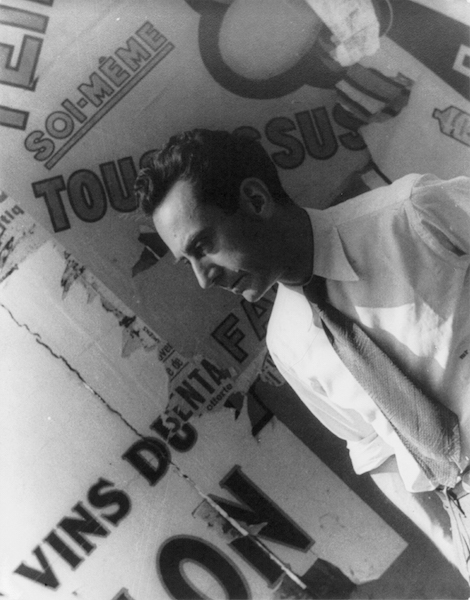
Man Ray
A significant contributor to Dadaism and Surrealism, Man Ray created photographs that operated in the gap between art and life. Andre Breton described him as a ‘pre-Surrealist’ since his art largely influenced Marcel Duchamp and have been very important in popularizing Surrealism. He made significant contributions to the avant-garde, fashion and portrait photography, but he is also very famous for his photomontages. These prints play with femininity and form and experiment with various techniques such as multiple exposures. His most famous pieces of this kind are those featuring Alice Prin and Dora Maar. With Lee Miller, he reinvented ‘solarization’, a photographic process that records images on the negative reversing dark with light and vice versa. He also championed the techniques ‘shadowgraph’, a process of camera-less image-making using light sensitive paper.
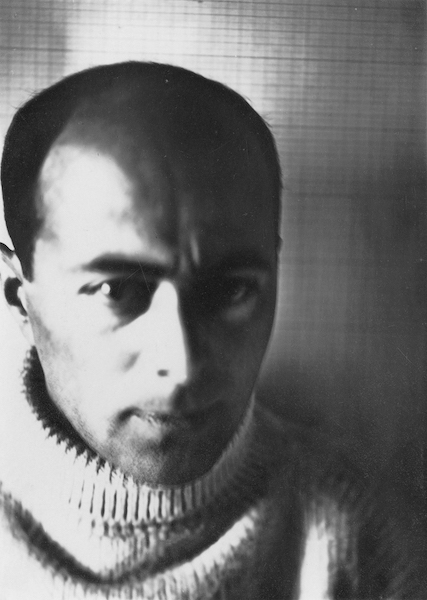
El Lissitzky
Utilizing art for a social and political change, El Lissitzky was a Russian painter, designer, and typographer. During the late 1920s and early 1930s, Lissitzky experimented with the latest media such as typography, photography, and photomontage. This is considered as his most progressive period. For him, photography was the most efficient way to express the dynamic reshaping of his country. He experimented widely with photograms and photo collage and created mountings in the form of multilayered photos. Using multiple exposures in printing, he exploited the effect of transparency and juxtaposition to achieve dynamic compositions. The photomontage of the birth announcement of his son featured the superimposed image of the infant Jen over a factory chimney, linking his son's future to the country’s industrial progress. His art majorly influenced De Stijl's talents and Bauhaus instructors.
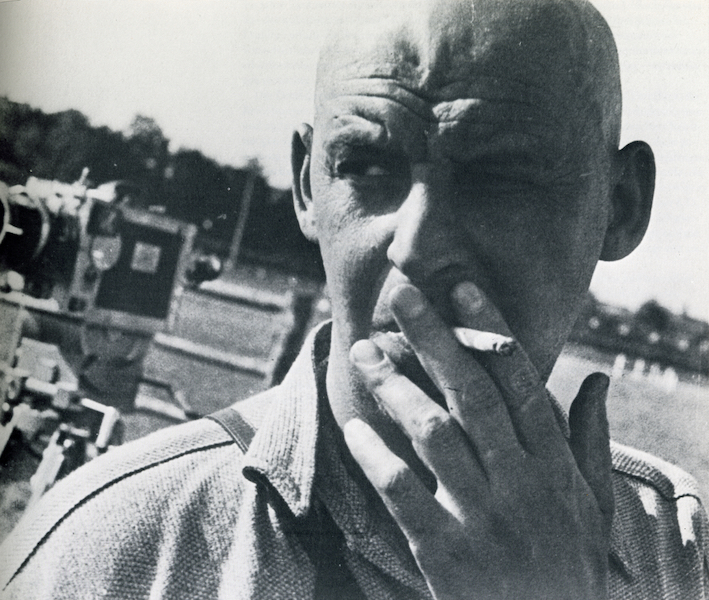
Alexander Rodchenko
As one of the most important avant-garde artist who has put his art in the service of political revolution, Alexander Rodchenko was an influential founder of the Constructivist movement. Initially involved in painting, in 1921, he started concentrating on three-dimensional design objects, architectural sketches, and photography. Through photos, he enjoyed the most success. He was famous for his avant-garde compositions and experimental approach to focus and contrast. Impressed by the German Dadaists, Rodchenko started experimenting with the medium. He first used found pictures, but later started shooting his own imagery. His photomontage was first published as an illustration for Mayakovsky’s poem About This in 1923. His works in the creation of photographs significantly contributed to European photography in the 1920s.

John Stezaker
British conceptual artist John Stezaker creates irreverent collages using glamorous 1950s portraits featuring dapper suited men and Hollywood stars. He combines these pictures as readymades with other faces or even landscapes to make the effect of the uncanny and absurd. He re-examines various relationships to the photographic image such as the documentation of truth, purveyor of memory or the symbol of modern culture. Through elegant and clever juxtapositions he forms his own poignant meanings. He conjures radical ideas out of pictures that would otherwise allure the everyday viewer. He avoids the term photomontage in favor of the collage. As he stated himself, 'cutting a photograph can feel like cutting through flesh’. In 2012, he received the Deutsche Börse photography prize, and the mixed reviews from the critics regarding it prove that photomontage is still perceived controversial.
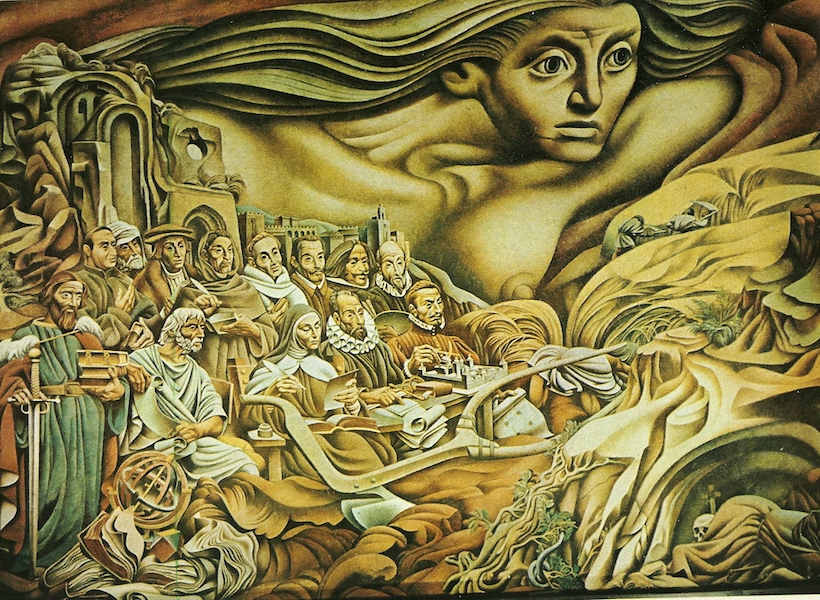
Josep Renau
The work of the Spanish painter, poster designer and muralist Josep Renau was always political. He joined the Communist Party in 1931 and in the mid-1930s he created posters that supported the Spanish Republic against Franco’s army. After his exile in Mexico following the end of the Spanish Civil War, he became heavily influenced by the popular culture imagery of the US. He appropriated the imagery from the US advertising and popular magazines and juxtaposed them into montages dealing with racism, sexism, the power of media and consumerism. With these works, he directly attacked the American culture in a witty and clever way. This collage series was first exhibited in the US in the late 1980s. He is rarely mentioned with the early radical proponents of photomontage, but he has played a significant role in the development of this form.
Editors’ Tip: Hannah Höch: Life Portrait: A Collaged Autobiography
Hannah Höch: Life Portrait divides the monumental composition into 38 individual sections, as Höch imagined it, and offers explanatory texts and relevant quotations to complement each section. One of only a few English-language publications on the artist, this volume explores Höch’s final masterpiece and the life’s work it represents. Höch’s last--and largest, at nearly 4 x 5 feet--photo-collage, “Life Portrait,” was created between 1972 and 1973. Though she did not originally set out to make an autobiographical work, the collage functions as a kind of self-portrait for the artist, looking back on her life and work while also ironically and poetically commenting on key political, social and artistic events from the previous 50 years.
Famous Photomontage Examples, and Ethics Behind It
If there can be an abstract painting, why shouldn’t there be an abstract photo? Sometimes, of course, it is pretty obvious that there is some sort of a montage in the game. Sometimes, though, it is not so visually clear and this is where the problem begins. Can an artist alter reality? Is it really art then? Is it ethical to do such a thing? Is it the misuse of art? When an artist plays with the viewer’s common sense, presenting the photographs that clearly show something impossible like the Scott Mutter’s imagery of people walking next to the airplane during its flight above clouds, there is no doubt that the value of art is high. As Mutter described once, '[the] images are an attempt to represent something that is a reality. Not a physical reality, but a representation through metaphor'.

Physically Altered Images
If you take, for example, a writer and artist associated with Dada in Berlin, Johannes Baader, with his collage on a book page with ink inscription from 1920, as one of the movement’s most famous photomontage art pieces, you will clearly see the physical change the artist made with a picture, in order to form idealized photo-imagery. Having in mind that Dadaists actually used scissors and glue to cut and paste photographs, as well as integrated written texts over the printed collages, there was no doubt that the original photographs were manipulated and altered. But, when it comes to digital techniques, they are far more sophisticated, and furthermore – much harder to catch.
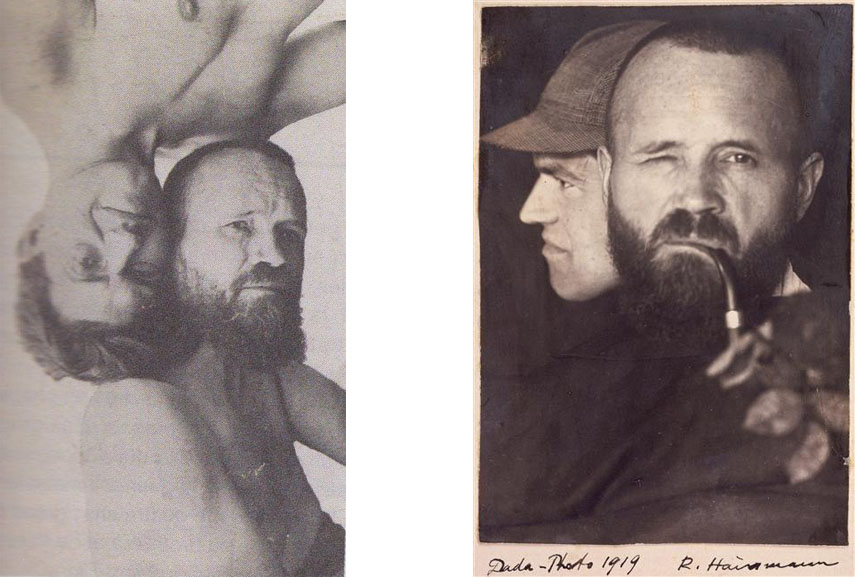
Cut-and-Paste Culture
Today, 'the culture that we live in has become such a sort of cut-and-paste culture', as it was described by Daniel Herrmann, a curator at the Whitechapel Gallery in London. It is true, we are overwhelmed with the amount of information we receive and share every minute of every day. 'Collage has become a representative for that state of cultural production. It offers an alternative to an ever-shifting, ever-fluid image world and reminds people of tactility, texture, and the reality of the world we live in', Daniel Herrmann pointed out. On the other hand, Laura Hoptman, a curator in the department of painting and sculpture at the Museum of Modern Art in New York, says that the collage can also be characterized as a way of how to 'experience information simultaneously'. There is a 'horizontal cloud of information', as Laura Hoptman calls it, referring to mixed data that we all operate with through our lives.
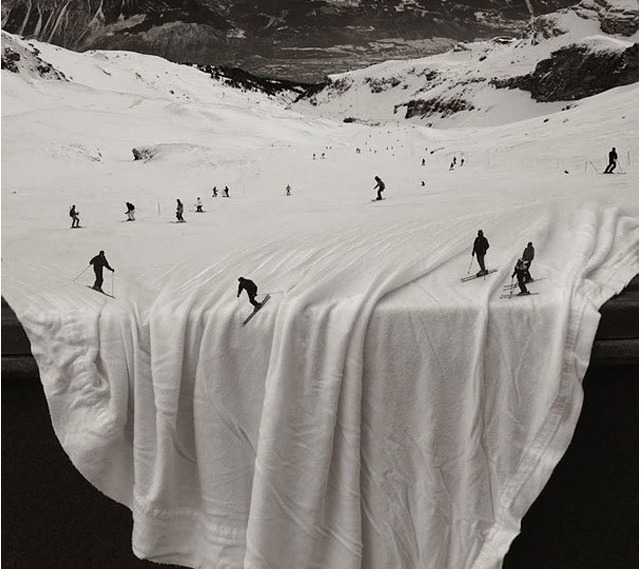
A Cocktail Master, but not a Bartender
A contemporary Spanish artist Antonio Mora, with a background in the design industry working as an art director, sees his own art as vertical solutions. He is calling himself a cocktail master, but not to be mistaken for a bartender. He is making cocktails out of pictures by using pictures found in blogs, online magazines, and everywhere around the digital sphere, and then fusing them together. His hybrid beings became an epic example of an original way of how to use a photomontage and photo manipulation to make pure art out of the mixture.

Imagery with the 'Wow' Effect
Another true master of photo manipulation is Thomas Barbey, a Swiss artist based in the United States. Long before Photoshop was there, he was taking pictures from every corner of Earth he had visited. Today, he still isn’t using digital photo editors to montage photographs. He is ‘making his magic’ in the dark room. And what does he do? He is creating such surrealistic photomontages that the most tech-savvy creative industry people would envy his skills. Some of the famous imagery of this artist include skiing on a table, underwater couple, zebra piano, Venice canal within a church, and much, much more. He is only working in black and white, and he is creating unique photo manipulations solely as a purpose of doing fine art. His work has been exhibited in many museums around the world, and art collectors are literary fighting over his artworks they want to possess. Currently, his photomontages are in the private collections of more than 20 art collectors out there. Thomas Barbey intrigues art lovers because he doesn't make an ordinary collage. He is actually mixing several negatives, some of them decades older than others. The ultimate goal is to make a picture that will honestly astonish the viewer. As the artist stated himself, if he looks at his own image and the first reaction is 'So what?', he destroys it and does all over again differently until he gains the 'wow' effect. And, truly, his photomontages really do wow people.
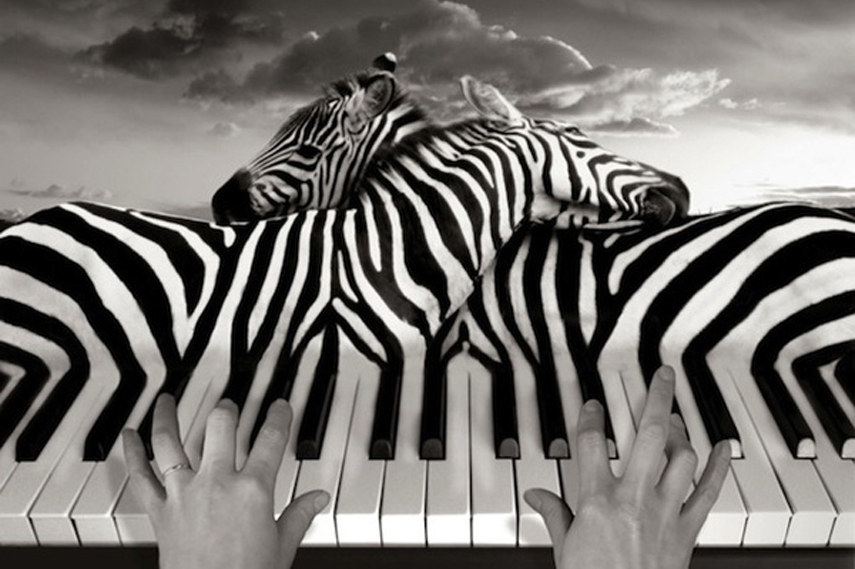
Beyond Imagination
One more individual who devoted their career to specific photomontage and became respected around the world for the work is Laurence Demaison. She is primarily working with analog photography, exploring its technical possibilities. By experimenting with long exposures, flash, and the negative, Demaison question the limits of the medium by creating intriguing shots that show us how a camera can deceive a human eye. For over 22 years she has been creating self-portraits, but those shots are not about her, as she explains. The photographs she makes, Demaison calls the 'paper phantoms'. There is a good reason for that, as the subject disappears and reveals a whole different world beyond the viewer’s imagination.
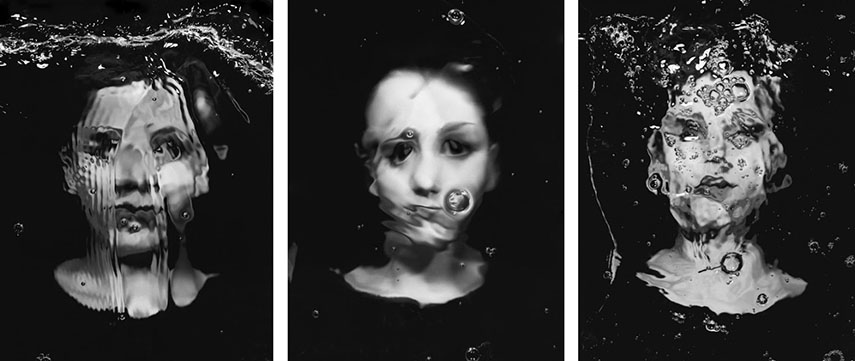
Manipulation of Reality
When we talk about photomontage, we cannot neglect some important parts of photography disciplines. Those are documentary photography and photojournalism. You may wonder what it has to do with photomontage, and with fine art for that matter, when their aim is to capture the reality as it is and to depict the world around us in all its rawness, without the desire to be perceived as art. But there are certain morally based concerns regarding the specific use of photography. It’s about a little bit different way of altering photographs, where the photomontage happens even before the picture is taken. There is nothing wrong with a photographer paying to his models for posing for him, right? Right, if it is a photoshoot for a fashion campaign. This could be a problem, though, if it's about the work of documentary image-making. Instead of depicting the reality as it is, paying models could create the world the artist wants us to see. The same goes for changing the scene to make it look like the photographer wants it to appear. Why would a documentary photographer want to alter the scenery? Firstly, to provoke the emotions of the viewers. The bigger the visual impact, the higher the value of the photo. So, some of the documentary photographers and photojournalists out there do manipulate reality in such a way, which is highly disputable in a range of professions. It certainly is a specific kind of photomontage, whether they want to admit it or not. And when it comes to ethics, this question is heavily arguable - Is it art, then, or is it a lie?
Editors’ Tip: Photomontage Between the Wars 1918-1939
This entirely English-language publication offers a fascinating overview of the birth of the photomontage process specifically in Germany and the Soviet Union in the 1920s. The extensive range of posters, collages, maquettes, postcards, magazines, and books featured in this exhibition catalogue attests to the enormous influence of photomontage in politics, social protest, and advertising, while also demonstrating the popularity of the technique among avant-garde members during these two decades. Essays in this visually rich publication examine contemporary texts that the practice of photomontage inspired and explore those qualities of photomontage that led to what was arguably the most important exhibition devoted to this artistic technique at the Kunstgewerbemuseum in Berlin in 1931.
Written by Angie Kordic, Elena Martinique and Nadia Herzog.
Featured images in slider: Peter Kennard's Tony Blair portrait / Josep Renau - Hoy más que nunca VICTORIA, 1938 / Artwork by John Stezaker; Alexander Rodchenko - Young Gliders, 1933 / El Lissitzky - Construction worker in The USSR in Construction no. 2, 1933 / Kurt Schwitters - The Proposal, 1942. All images used for illustrative purposes only.
Can We Help?
Have a question or a technical issue? Want to learn more about our services to art dealers? Let us know and you'll hear from us within the next 24 hours.


